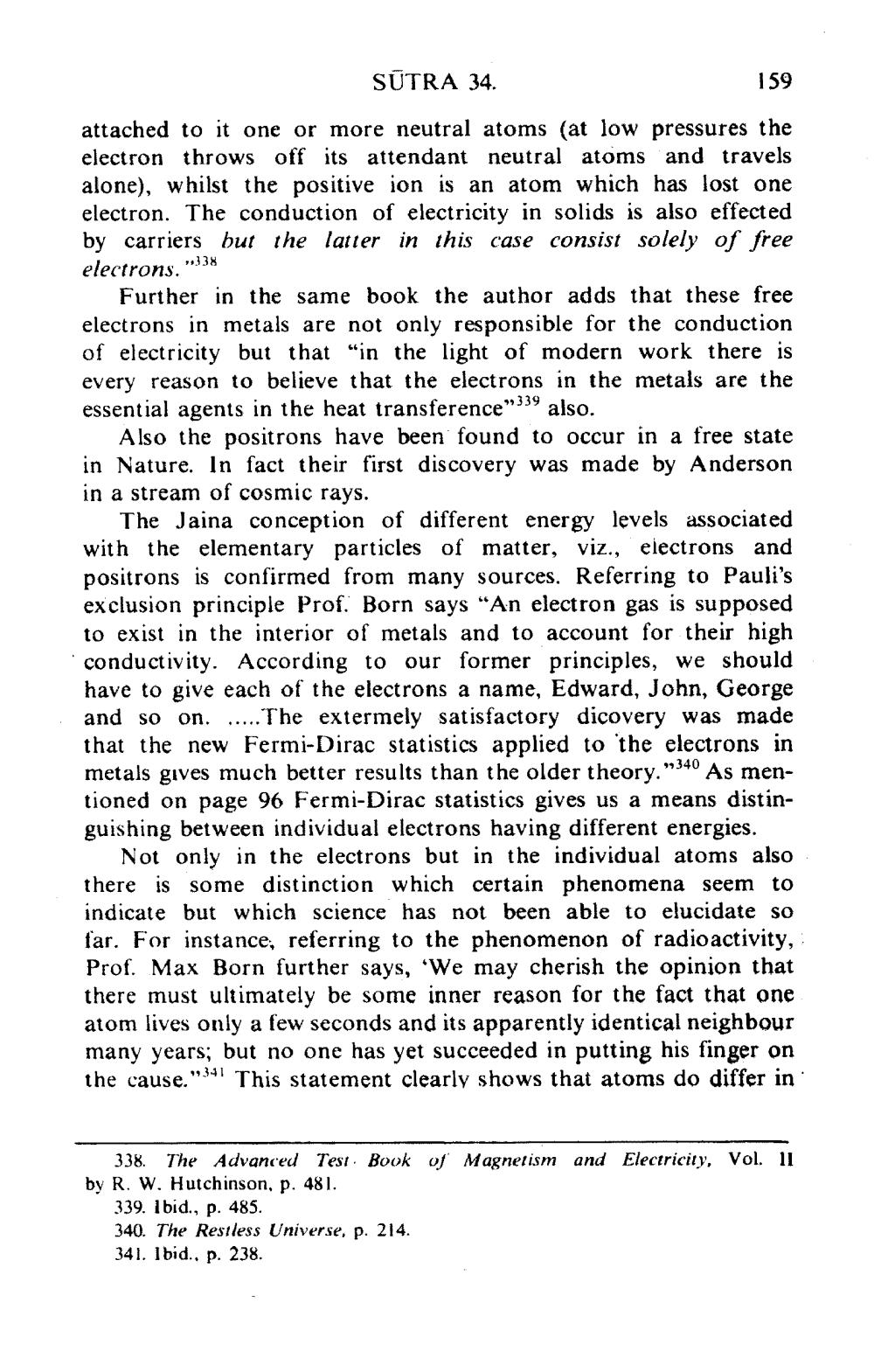________________
SUTRA 34.
159
attached to it one or more neutral atoms (at low pressures the electron throws off its attendant neutral atoms and travels alone), whilst the positive ion is an atom which has lost one electron. The conduction of electricity in solids is also effected by carriers but the latter in this case consist solely of free electrons. "338
Further in the same book the author adds that these free electrons in metals are not only responsible for the conduction of electricity but that "in the light of modern work there is every reason to believe that the electrons in the metals are the essential agents in the heat transference":59 also.
Also the positrons have been found to occur in a free state in Nature. In fact their first discovery was made by Anderson in a stream of cosmic rays.
The Jaina conception of different energy levels associated with the elementary particles of matter, viz., electrons and positrons is confirmed from many sources. Referring to Pauli's exclusion principle Prof. Born says “An electron gas is supposed to exist in the interior of metals and to account for their high conductivity. According to our former principles, we should have to give each of the electrons a name, Edward, John, George and so on. ..... The extermely satisfactory dicovery was made that the new Fermi-Dirac statistics applied to the electrons in metals gives much better results than the older theory."340 As mentioned on page 96 Fermi-Dirac statistics gives us a means distinguishing between individual electrons having different energies.
Not only in the electrons but in the individual atoms also there is some distinction which certain phenomena seem to indicate but which science has not been able to elucidate so far. For instance, referring to the phenomenon of radioactivity, Prof. Max Born further says, 'We may cherish the opinion that there must ultimately be some inner reason for the fact that one atom lives only a few seconds and its apparently identical neighbour many years; but no one has yet succeeded in putting his finger on the cause."#4This statement clearly shows that atoms do differ in
and Electricity, Vol. II
338. The Advanced Test Book of Magnetism by R. W. Hutchinson, p. 481.
339. Ibid., p. 485. 340. The Restless Universe, p. 214. 341. Ibid., p. 238.




